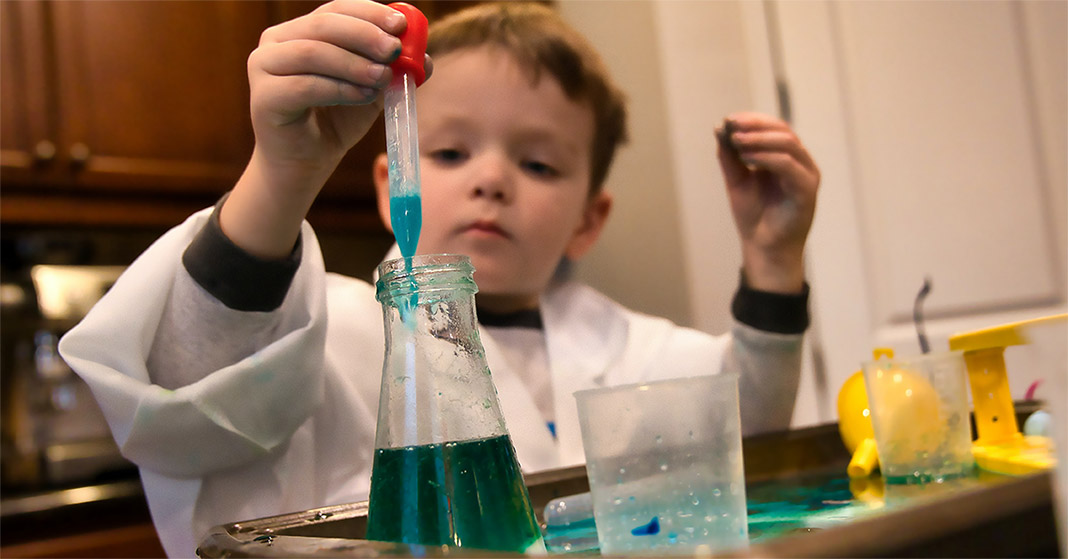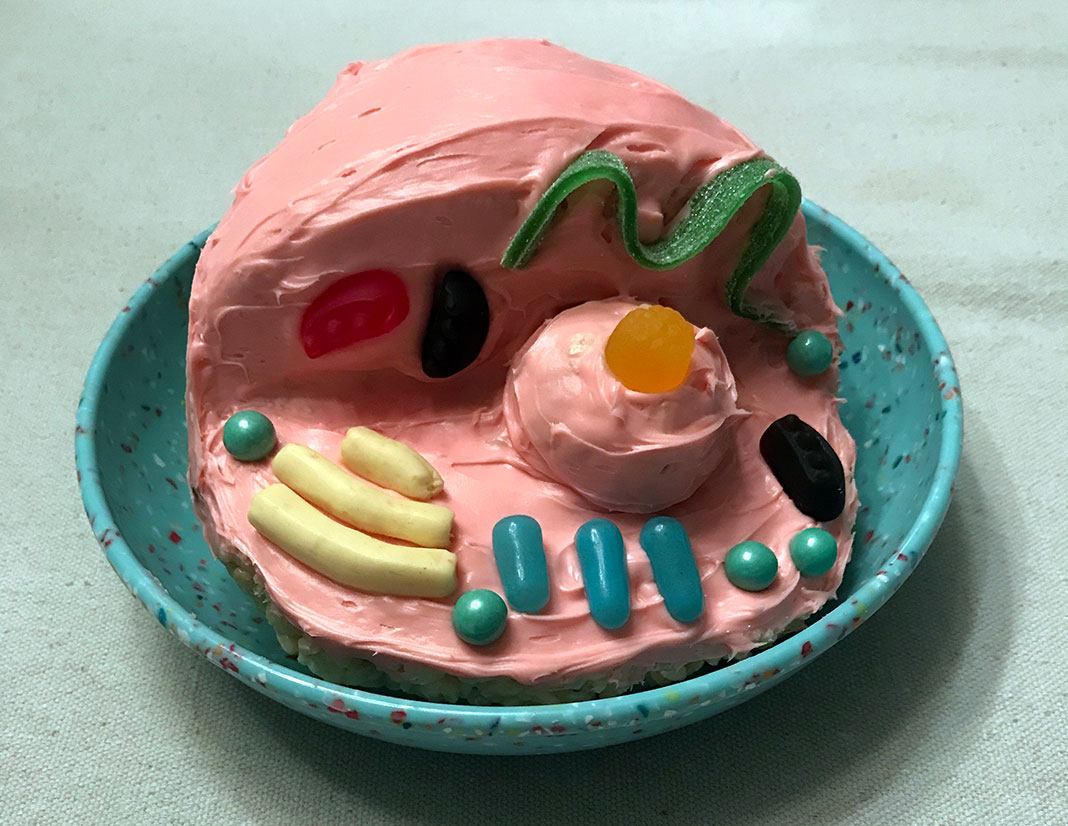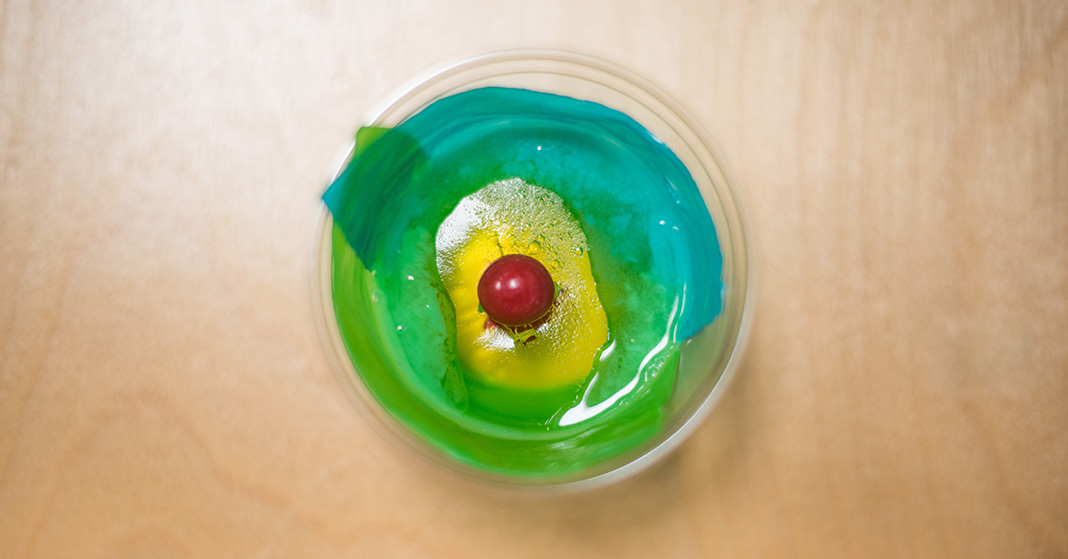
Plant and animal cells are microscopic and have many complex parts to learn. It can be difficult for students to learn about what they cannot see. Making an edible cell model is a great active learning strategy. Choosing the components and building the cell project will help students remember all the parts. Knowing they can eat their cell model afterward adds extra excitement to the project. We’ve listed 4 edible cell model ideas that will boost your child’s retention of plant and animal cell biology concepts and double as snack time or dessert.
How to make a cell model
- Choose a plant or animal cell. A plant cell should include a cell wall, chloroplasts, and a central vacuole, but all other parts of a plant and animal cell are the same.
- Choose your favorite edible cell project idea. The simplest project is listed first.
- Gather the parts for your cell model.
- Follow the baking and preparation instructions
- Add candy cell parts and label them.
- Enjoy your tasty creation!
Plant cell model vs. animal cell model
Plant cells are surrounded by a cell wall which gives them a specific shape, usually cube-like. Plants are not mobile like animals, and so they have some specialized organelles to help them with energy needs. They create energy from sunlight in their chloroplasts and store nutrients in a large central vacuole in case they encounter unfavorable conditions. Animal and plant cells have other features in common, including a cell membrane, a nucleus, cytoplasm, and many organelles.
Parts of a cell
Choose your favorite topping that looks most like each part of the cell. Decide ahead of time which cell organelles you will include. A basic cell model for elementary students might only include the first 4-5 parts. For more advanced students, include the entire list. We’ve given some ideas for which toppings to use, but you’re welcome to choose your own. Involving students in the selection of toppings is a valuable learning opportunity and a way to encourage creativity. They might choose toppings that look most like the structure or toppings that remind them of the function of each organelle.
1. Cell wall
Cell walls are only found surrounding plant cells. The cell wall is found just outside the cell membrane. You might think of the cake pan or pizza crust as representing the cell wall and membrane for simplicity.
2. Cell membrane
The cell membrane is made of fats, and because it is permeable, it allows animal cells to share nutrients and enzymes. In the gelatin model, the cell membrane is represented by fruit strips.
3. Nucleus
The nucleus is surrounded by a membrane. It houses the genetic material, DNA, for each cell. The nucleus is usually a large component of the cell and is represented by the gumball in the gelatin model.
4. Cytoplasm
The cytosol is the goo surrounding all the organelles. Together the cytosol and organelles make up the cytoplasm. The gelatin, the icing on the cake, or the cheese on your pizza can represent the cytoplasm.
5. Chloroplast
Chloroplasts are unique to plant cells. They contain special structures that turn sunlight into energy. Their shape is like a jellybean or Mike & Ike. Make sure you use green ones!
6. Central vacuole
Plant cells have a large central vacuole that serves as a storage site for nutrients the plant cell can use in case of unfavorable conditions. A different color of icing could represent the central vacuole on a plant cell cake. Animal cells also have many small vacuoles but not one large central vacuole.
7. Mitochondria
Both plant and animal cells have mitochondria. They turn sugars into energy for the cell. The remaining colors of jellybeans or Mike & Ike will make great mitochondria.
8. Endoplasmic Reticulum (rough and smooth)
The endoplasmic reticulum (ER) is a membranous organelle that sits alongside the nuclear membrane. There is no real distinction between the three inter-connected membrane structures: nuclear membrane, rough ER, and smooth ER. In general, rough ER produces new proteins, and smooth ER produces new membranes. Rough ER is so-called because it is dotted with ribosomes. These ribosomes make proteins that will be embedded in membranes or that need to go to the outside of the cell. Fruit strips or deli meat look the most like this membranous organelle.
9. Ribosomes
Ribosomes are special proteins that read the instructions from the nucleus to make proteins. Free-floating ribosomes make proteins that will reside in the cytoplasm. Small round sprinkles would make great ribosomes on a cake. Bacon bits are the perfect pizza topping.
10. Golgi apparatus
The Golgi apparatus is another membranous organelle that resides near the nucleus. It is like a dispatch station for the membranes and proteins from the ER.
11. Cytoskeleton (optional)
The cytoskeleton is not strictly an organelle, but it has an important job to do. It gives cells structure and allows movement in animal cells like your body’s skeleton. The cytoskeleton is made of long tubules, so it might be represented by individual pieces of Twizzlers pull ‘n’ peel or by cookie sticks, like pocky.
Edible cell project ideas

Plant cell cake
You will need:
- Boxed cake mix, plus ingredients listed on the box
- Frosting for the cake
- Food coloring, if desired
- Candies to represent different cellular organelles
Instructions:
Prepare the cake in a 9×13 pan, following directions on the box. After the cake cools, frost the cake all over with colored frosting for the cytoplasm. Use white frosting or another color for the central vacuole. Add candies to decorate the top of the cake to look like a plant cell model. Take a picture that you can digitally label. Enjoy your plant cell cake.

Candy cell model
You will need:
- Rice Krispies, plus ingredients listed on the box for Rice Krispies treats
- prepared frosting
- Food coloring, if desired
- A variety of candies to represent different cellular organelles
Instructions:
Prepare the Rice Krispies treats as directed on the box, and mold into a spherical shape with a wedge missing while the treats are still hot. You can be creative with the shape since animal cells lack a cell wall.
After the have cooled in the refrigerator, frost the entire shape with white or colored frosting as desired. Add candies to decorate the inside of the wedge so the edible cell model looks like an animal cell. Take a picture that you can digitally label. Enjoy your edible cell model.

Jello cell model
This edible cell model activity will work best for younger students and uses a few common ingredients. And, if you prepare your models in the morning, these will make an excellent dessert for after dinner. Your children can share what they learned about cells with the rest of the family and explain how the model works. You will need:
- Cell model printable
- Clear plastic cup
- Measuring cups (1 cup and ½ cup)
- Bowl
- Spoon
- Refrigerator
- Fruit strips
- Gelatin powder (light colored or clear)
- Gumballs
- Ice cubes
- Hot water
- Gummy candies (optional)
Instructions:
- Prepare gelatin according to package instructions. Make sure gelatin is cool before adding it to the cups.
- Line the cup with the fruit strip to represent the cell membrane. It should touch the bottom of the cup all the way around. This will start our cross section of a cell. Have your child answer the questions in the printable as she goes.
- Add the gelatin to the cup with the fruit strip to represent the cytoplasm. Make sure the gelatin is cool or cold. Only add enough gelatin to go to the top of the strip. Since you may have enough gelatin to make more than one cup, feel free to make several models. Another model may come in handy if you decide to do the optional portion.
- Chill the gelatin cup in the refrigerator until the gelatin is no longer a liquid. This will take 4–6 hours. Putting it in the freezer for an hour before moving it to the refrigerator for an additional 2–3 hours will help it set more quickly.
- Push the gumball into the gelatin to represent the nucleus. Any round candy will also work.
- (Optional) Add additional gummy candies to represent a chloroplast or other parts of a cell.
- Leave the cell model in the cup. The mingling of sugars from the fruit strip and the gelatin may cause the fruit strip to liquefy, so leaving it in the cup will keep it from completely dissolving.
- On the printable, have your child draw a diagram of the cell model, label the parts, and color it. Then, ask your child to explain why models are useful and what each part represents.
Pizza cell model
You will need:
- A pizza crust mix, plus the ingredients listed on the package
- pizza sauce
- Your favorite pizza cheese
- Another variety of cheese with a different color, if desired
- A variety of pizza toppings to represent different cellular organelles
Instructions:
Prepare the pizza crust as directed on the package. Spread onto a rectangular cookie sheet or round pizza pan. Add the sauce and your favorite pizza cheese all over the crust. You can use another variety of cheese to make large structures like the nucleus or central vacuole. Chop toppings into shapes that represent organelles. Bake the pizza according to the crust package directions. Take a picture that you can digitally label and enjoy your pizza cell model for dinner or a snack.
More advanced students may take the level of difficulty up a notch and create a meat and cheese board for their plant or animal cell model.
Once your child has finished his or her plant or animal cell project, set aside time to review the parts of the cell and assess what your child has learned. Ask how a plant cell is different from an animal cell and see if your child can label the parts from memory.
Let us know how your cells turn out. We’d love to see them! Please share photos on Facebook or Instagram and tag us with @bjupresshomeschool.
• • • • •
Valerie is a wife and a mother to a very busy toddler. In her free time she enjoys reading all kinds of books. She earned a B.S. in Biology from Bob Jones University, minoring in Mathematics, and a Ph.D. in Molecular Genetics from Ohio State University. Valerie has 15 years of experience working in research laboratories and has coauthored 8 original research articles. She has also taught several classes and laboratories at the high school and college levels. She currently works as a Data Analyst and a freelance writer.
Leave a Reply